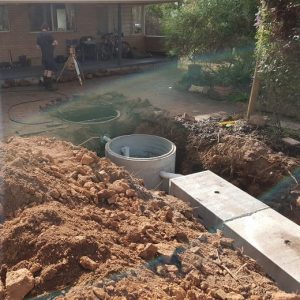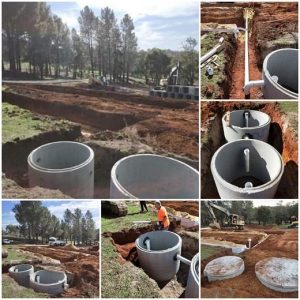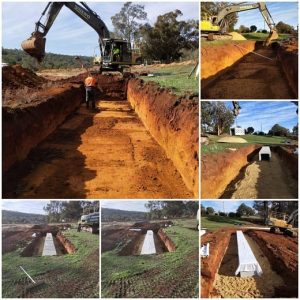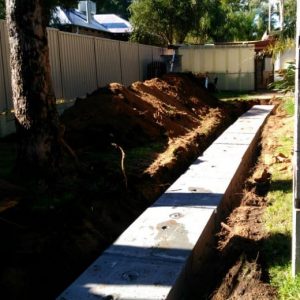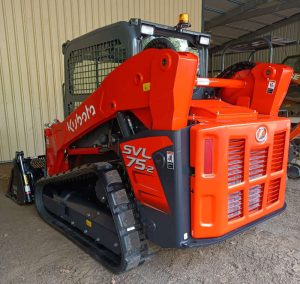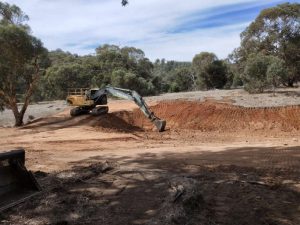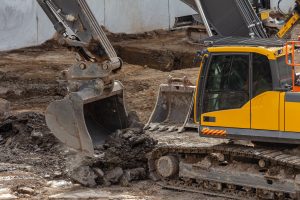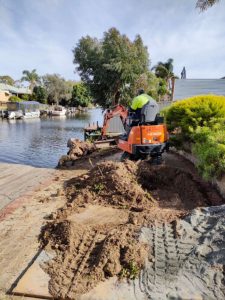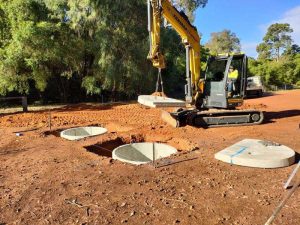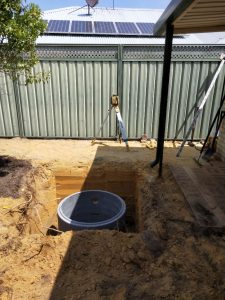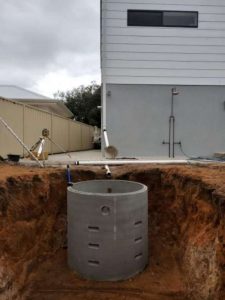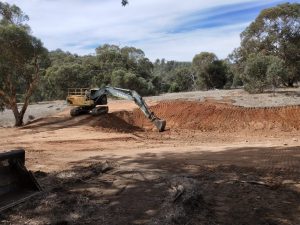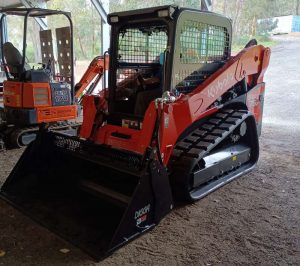At Dobson Excavations, we want to ensure that your wastewater is managed properly. Septic tank installation and leach fields are necessary for the proper management of wastewater disposal. Many of our customers want to know more about how these work as well as the benefits of installing them.
Septic Tank
Septic tanks will safely disperse wastewater so that drinking water is not contaminated. A septic tank is a water-tight container made of concrete or polyethylene, buried underground. It will hold wastewater that travels through pipes from toilets and laundry drains in such a way that solids settle to the bottom and grease and oil float to the top. The top scum layer helps to keep the tank airtight which in turn uses naturally forming anaerobic bacteria to break down and digest the organic waste. Water will flow from the tank through an underground outlet into a leach drains. The wastewater will permeate into the soil from holes within the leach drains. The soil naturally has microorganisms that will remove harmful bacteria and particulate matter from the wastewater. The processed water then moves to the groundwater becoming part of the natural water cycle. The size of a septic tank is determined by both the size and water needs of the home. At Dobson Excavations, we recommend that homeowners pump the tank every few years in order to prevent blockage from inorganic solids. Homeowners can also support biodegradation in septic tanks through the addition of biological additives. Septic tanks can be quite beneficial. They are good for the environment, using a natural filtration system. Septic tanks are cost-effective, lowering public water usage bills. Septic tanks generally require less maintenance and will last 20-40 years.
Leach Drain
A leach drain is an underground component of a sewage treatment system. Leach drains are connected to the septic tanks and the leach drains are surrounded by sand, gravel or permeable soil, they bring wastewater away from the septic tank keeping drinking water safe. The leach drain usually extends into a flat area that is close to the house, but far enough away so that wastewater does not infiltrate the home’s walls. Leach Drains are fast and easy to install, and help to ensure that soil in the trenches do not become compacted. They offer the benefits of reliability and low maintenance costs as well as the adaptability to be relocated for new construction or high traffic areas on the land. With proper maintenance of the septic tank and leach drains can last up to 25 years.
At Dobson Excavations, we will survey your land to ensure that your septic system and leach Drains are installed properly to ensure that your wastewater and drinking water never mix. This involves looking at soil composition, tree roots, and the sloping of land into the proper design of your septic system. Do you need a professional perspective on your water system? We are happy to help where needed; whether it’s advice or installation, we do it all. We look …

